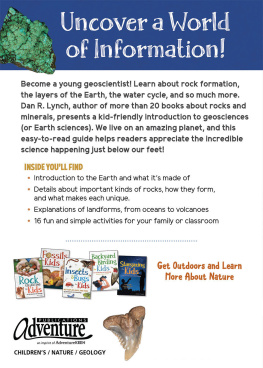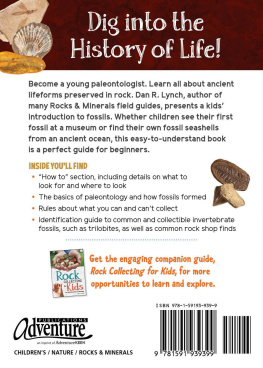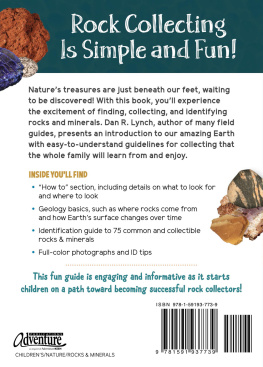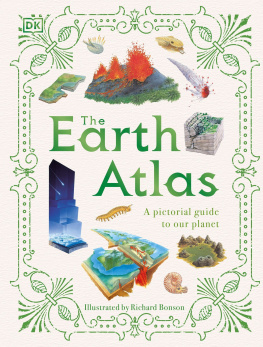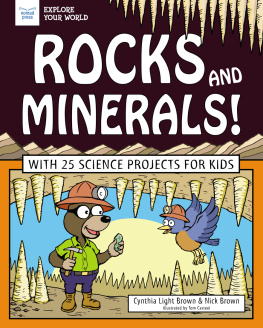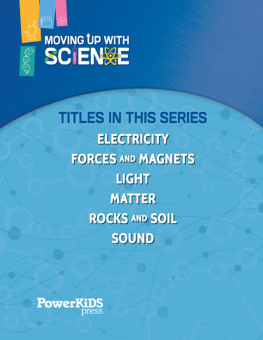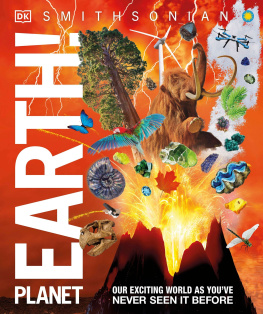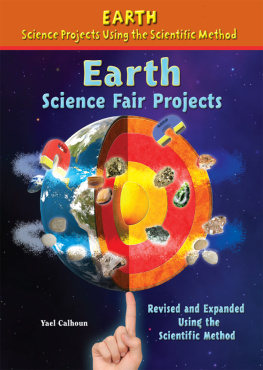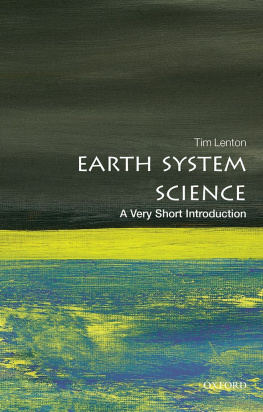
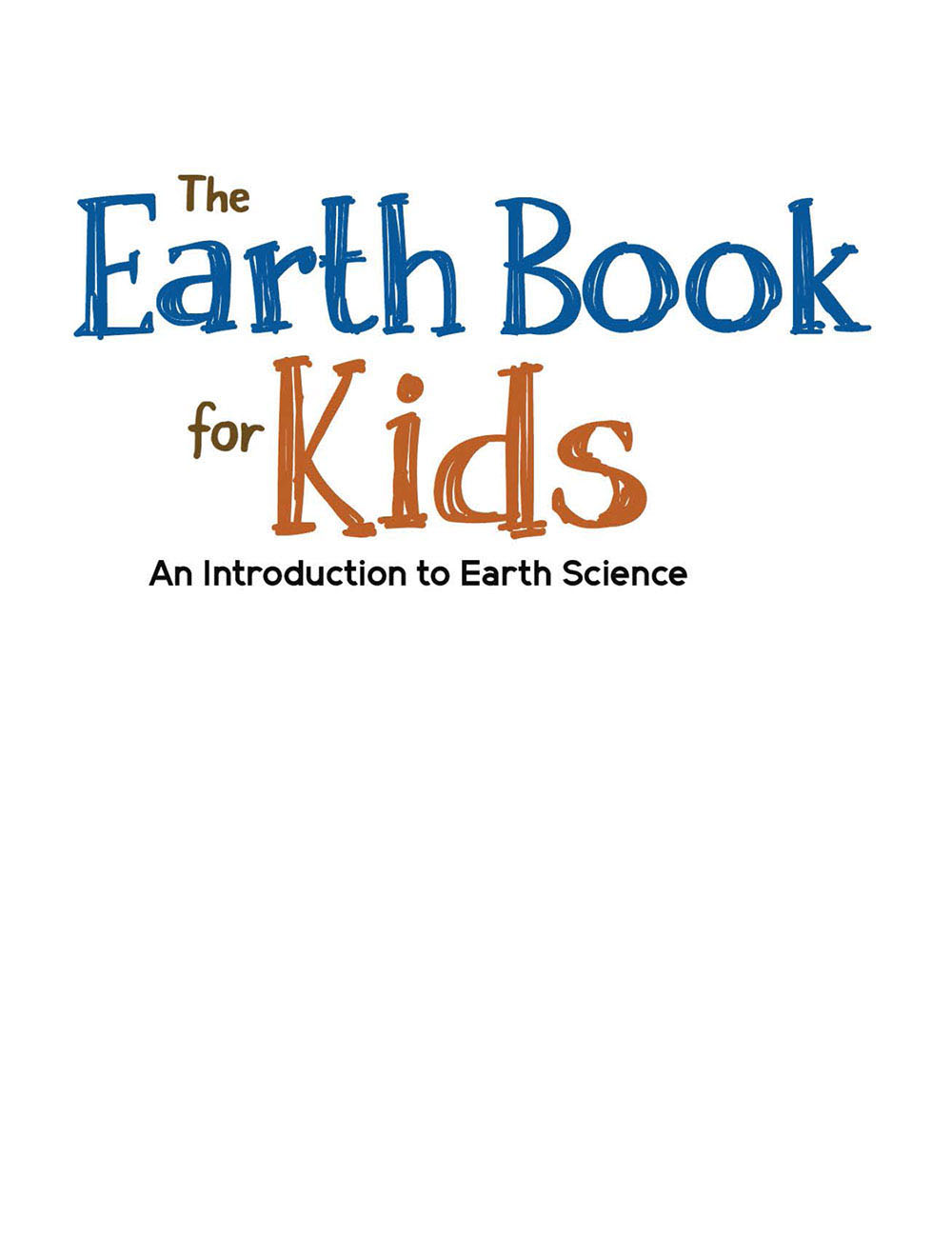

Disclaimer Kids should always be accompanied by an adult when outdoors, and it's your responsibility to recognize, and avoid, the potentially dangerous bugs, insects, plants, or animals in your area. Always be aware of the weather and your environmental surroundings, and stay off private property. Never collect anything unless youre certain you have permission to do so. Rock collecting is not allowed in national parks, on Native American reservations, and in most state and local parks. Collecting Native American artifacts is also illegal on public lands.
Edited by Brett Ortler
Cover and book design by Jonathan Norberg
Proofread by Dan Downing
Cover photos: Islamic Footage/Shutterstock: volcano; Gaspar Janos/Shutterstock: mountain landscape; Ralf Lehmann/Shutterstock: lava; and Dan Lynch: front (background texture, feldspar, granite), back (malachite, shark tooth), spine (copper)
All photos copyright by Dan R. Lynch unless otherwise noted.
NASA: (top).
credits continued on
10 9 8 7 6 5 4 3 2 1
The Earth Book for Kids: An Introduction to Earth Science
Copyright 2022 by Dan R. Lynch
Published by Adventure Publications, an imprint of AdventureKEEN
310 Garfield Street South
Cambridge, Minnesota 55008
(800) 678-7006
www.adventurepublications.net
All rights reserved
Printed in the United States of America
ISBN 978-1-64755-283-1 (pbk.); ISBN 978-1-64755-284-8 (ebook)
Acknowledgments
Dan would like to thank his wife, Julie, for her unending love, support, and patience, and his friends, Emily Dix and Steve Turnbull, for their constant encouragement.
Table of Contents
Introduction to Geoscience

The surface of the Earth is an exciting patchwork of soaring mountains, deep oceans, and vast plains and deserts. But as amazing as these places are, the science of how they formed is even more incredible! Thats because as solid as the ground beneath our feet seems, the Earth is always changing. Inside the Earth, deep underground, it is very hot, and the rocks are soft and move slowly. Everything above themincluding us and the ground we walk onmoves with those rocks!
And change is always happening on the surface, too. When it comes to geology, nothing lasts foreverrivers, mountains, and even entire continents moveand they will disappear someday. And by looking at the Earth today and how its continents and oceans fit together, we can figure out what the world looked like long ago. We can even predict what the planet will look like in the future!


The study of how the Earth and its features form and change is called geoscience . Someone who works in geoscience is called a geoscientist . There are lots of different kinds of geosciencessome geoscientists study the atmosphere (the air), some study the hydrosphere (the water), and others study the biosphere (how plants and animals interact and evolve). In this book were going to focus on geology (the study of rocks and how they can change) and the lithosphere , which is the hard outer layer of the Earth where we find all the mountains, lakes, plants, and animals.
The Earth is a special place, and incredible things happen deep beneath our feet, but you are probably wondering how it all works! Well talk all about it in this book, but first we need to know: What is the Earth?

The Earth and What Its Made of
What do you think the Earth is made of? You might say that its made of rocks. And thats true! But rocks are made of mixtures of special chemicals called minerals. When lots of minerals form together in the same space, they grow together to become a rock. But what are minerals made of? To answer that, we have to look a lot closer at the tiny particles that make up minerals and everything else in the universe, including you and me: atoms, elements, and molecules. In this chapter, well talk about all the little building blocks that make up our world!

Minerals make up the Earth, and all of the rocks that we see have lots of minerals inside them. When they have enough room to grow, minerals form crystals, which are special shapes that minerals can make. These are crystals of quartz (say it kwarts) , one of the most common minerals of all!
What Is the Earth?
Earth is the third planet in our Solar System ; the first four planets in our solar system are rocky planets; the outer four planets are gas giants (they have atmospheres of thick gas, but not much ground to speak of). So far, Earth is the only planet we know of that has life, like plants, animals, and humans. All the planets orbit the Sun, which means they spin around the Sun on an oval-shaped path.

Our solar system. Earth is the third planet away from the Sun. The size comparisons between the planets are true to life, but in reality the planets are much farther apart.
Most of Earth is made up of rock, but depending on where in or on the Earth you look, the rocks can be very different. Rocks on the Earths surface (the kind you can find and pick up) are cold, hard, and brittle, which means that even though they are very tough, they can break. But many of the rocky areas inside the Earth are very hotso hot that the rocks can be soft and will bend rather than break! The Earth gets hotter and hotter toward the center, and at the very middle is a core formed of solid metal. The Earth stays hot inside because its rocks are very good at holding in heat and also because gravity inside the Earth and radioactive minerals (special crystals that release energy) make new heat.
If we were able to cut open the Earth, wed see that it is made of several layers . Some layers are hard and others are soft, but they all get hotter as they get closer to the middle of the planet. The layer most important to us is the crust , which is the very top layer, on the outside of the planet. Its the coldest and hardest layer. The crust is where all the rocks youve ever seen are found, and its the layer we live on. But the other layers below it can affect and change how the crust looksthey can even make the crust break and move! We will discuss how all the layers interact later in this book.
The Earths Layers

Next page
